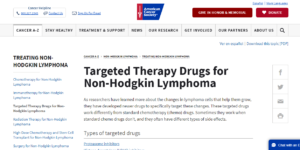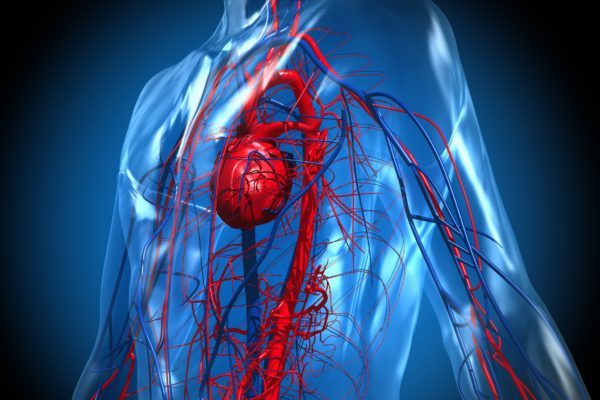
American Cancer Society – Targeted Therapy Drugs for Non-Hodgkin Lymphoma (English/Français/Español))
Non-Hodgkin lymphoma (NHL) is cancer of the blood and lymph system. This term covers all types of lymph gland cancer that cannot be classified as Hodgkin's disease.
Non-Hodgkin's lymphoma is caused by a certain type of white blood cells (lymphocytes) that starts dividing uncontrollably resulting in a tumour in the lymph gland (lymphoma). Lymphocytes play an important role in the control of pathogens and the production of antibodies. The type of the lymphoma is depending on the stage of the development in which the mutation occurs.
All types of lymphoma that are not diagnosed as Hodgkin lymphoma are automatically non-Hodgkin lymphomas. Non-Hodgkin lymphomas can be located everywhere in the body, in contrast to the Hodgkin lymphoma that often growths in the neck. The tumour cells can spread throughout the body via the bloodstream and therefore more glands at a greater distance can be affected. In approximately two-thirds of patients, a non-Hodgkin lymphoma develops in a lymph node. In more than a third of patients, the disease starts elsewhere in the body, mostly in other parts of the lymphatic system. For example, in the lymph tissue in the stomach, lungs, thyroid or bone marrow.
Non-Hodgkin lymphomas are classified into aggressive and non-aggressive (indolent) lymphomas. An indolent non-Hodgkin lymphoma can sometimes turn into an aggressive lymphoma after a period of time. Although aggressive lymphomas behave more violently when compared to indolent lymphomas, patients with an aggressive tumour have a much longer survival and better chance on complete recovery.
Several aggressive forms of non-Hodgkin lymphomas are:
If a patient has an indolent non-Hodgkin lymphoma, they may have one of the below mentioned types:
Chronic lymphocytic leukaemia (CLL / SLL) and Waldenström disease are classified as indolent non-Hodgkin lymphomas.
In the Belgium, non-Hodgkin is the 7th most common cancer, with around 2,000 new cases each year. Particularly people above the age of 55 are affected by this disease. In men, the disease is slightly more common than in women. Approximately half of the patients with non-Hodgkin lymphoma have the indolent, non-aggressive variant.
The first symptoms of non-Hodgkin lymphoma are often enlarged lymph nodes in the neck, armpits or groin. These swellings are not usually painful, but can sometimes become tender when pressed. If a non-Hodgkin lymphoma develops somewhere else in the body, it may cause damage or swelling of the surrounding tissue. Complaints can consist of:
The cause of non-Hodgkin lymphoma still remains unknown. In some cases, the development of the disease is initiated by a viral infection. Research also suggests that people with a congenital immune disorder, or those who take medications that supresses the immune system, have an increased chance of developing non-Hodgkin lymphoma. In all cases, these are malignancies from cells that descend from the lymphocytes.
The diagnosis of non-Hodgkin lymphoma is made based on a physical examination and blood tests. Often, additional tests are needed to determine the severity of the disease. The below test can be necessary to collect all the required information about the tumour:
The effectiveness of a treatment and the prospects for each patient are different. An aggressive non-Hodgkin lymphoma can be cured more often than its indolent variant, and thanks to the development of new medicines, the chance of survival is increasing. In patients whose treatment is effective and survive the first year, the chance on total recovery increases. Approximately 60% of patients who received a diagnosis between 2008 and 2012 were still after five years.
The choice of treatment depends on the following factors:
The treatment will often consist of a combination of:





